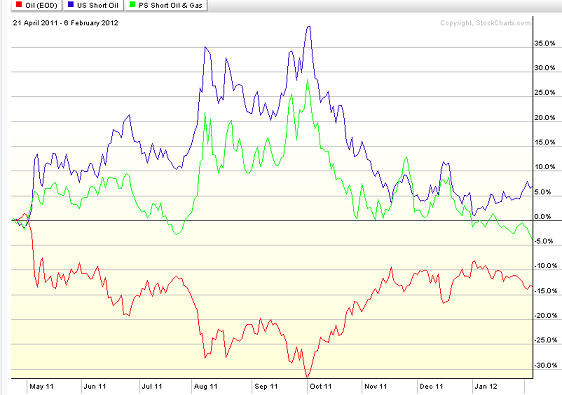Commodity Stocks v ETFs Which is Better
Post on: 10 Октябрь, 2015 No Comment

Commodity Stocks vs. Commodity ETFs Which is Better?
Commodities can have great trends and represent a diversification alternative for longer term profit opportunities. However, very few individual investors are willing to trade futures, which is traditionally how traders get access to that market. There are some excellent low cost alternatives to futures but which method is best really depends on what your investing objectives are.
The two most practical ways to access commodities outside the futures market are through commodity ETFs or commodity stock ETFs. A commodity ETF represents the actual underlying price changes of a commodity or material. Among many choices are commodity ETFs for oil, gold, silver or blends of different commodities.
A commodity stock ETF invests in the stocks of commodity producers rather than the underlying commodity itself. A commodity stock ETF may represent gold miners, oil producers or agribusinesses among others.
Both of these styles of ETFs carry risks as well as benefits but which is the right choice really depends on the reason why you are investing. If you are looking for diversification the commodity stock ETFs may present a problem. They will have a higher correlation to the equity market in general.
If you are already invested in stocks, adding a commodity stock ETF will add limited benefits because it tends to move up and down with stocks in general. Alternatively a commodity ETF will tend to move more independently of the stock market over the long term.
For example, in the image below you can see a general stock ETF (SPY) graphed with a gold stock ETF (GDX) and a gold ETF (GLD). As you can see the commodity ETF (GLD) is moving much more independently of stocks in general while the commodity stock ETF (GDX) is highly correlated.
The correct answer to which investment is best for your portfolio is a matter of understanding the differences between the two types of commodity investments and how it relates to your objectives.
1. Commodity Stock ETFs spread the an investment among several stocks in the same sector. For example, Market Vectors Agribusiness ETF (MOO) invests in a blend of stocks involved in the production of agricultural products. These stocks include Monsanto (MON), ADM (ADM) and Deere and Company (DE). The fund is diversified among different stocks but the fund as a whole is still highly correlated to the major stock indexes.
2. Commodity ETFs invest in either the actual commodity they represent such as the SPDR Gold Trust (GLD) or in commodity futures. The price of these ETFs will only be affected by the price of the underlying commodity itself. Commodity ETFs typically have a much lower correlation with the major stock indexes.
You can measure an ETFs correlation to a major stock index to get a feel for how much diversification potential there is. If an ETF has a statistical correlation of close to 1.0 it is going to go up and down with stocks. The lower the statistical correlation in an ETF, the more effective it will be from a diversification perspective. In the video we will walk through two examples how how this evaluation can be done and why it is important.














